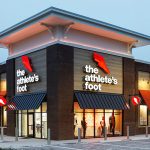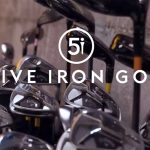Adidas AG last week raised its long-term growth rates for the Adidas Brand as well as its Other Businesses segment, driven by strength at TaylorMade-Adidas Golf. But all the attention went to management’s decision to sharply lower its 2015 revenue target for Reebok, to €2 billion from a €3 billion target set in November 2010.
About one third of the reduction at Reebok relates to NFL- and NHL-related sales related to the loss of a contract to supply National Football League apparel as well as the revised reporting of ice hockey-related license sales to the Reebok-CCM Hockey division. Nike’s deal with the NFL was first announced in October 2010.
The rest of Reebok’s forecast reduction was attributed to the brand’s focus on “margin and operational efficiency” as Reebok reinforces its positioning around fitness categories and shifts its focus to profitability rather than size in lower profit markets like India and Latin America.
Moving closer in line with the structure of Adidas, the global marketing organization of Reebok going forward will be organized in Business Units that build products and concepts around certain fitness categories and for Classics. Previously, they were largely grouped around products categories.
The updates were provided at an investor event at the TaylorMade headquarters in Carlsbad, CA.
Overall, Adidas officials at the event reiterated the company’s overall targets under its “Route 2015” strategic business plan first unveiled in November 2010. The plan called for global sales of €17 billion and a sustainable operating margin of 11 percent by 2015. A 5 percent increase in the sales target for the Adidas Brand and a 22 percent hike in its Other Businesses segment, led by TaylorMade, is expected to match the lowered rates at Reebok.
Regarding Reebok, Herbert Hainer, Adidas Group CEO, said the brand has come up with “inspiring concepts” over the last few years such as Toning, ZigTech and RealFlex that underscore the potential of the brand. But it has not established a sustainable platform for growth.
“While we have seen some good progress from the brand in re-engaging consumers and retailers alike, we cannot claim that we are on the path to sustainable global success just yet,” said Hainer.
Also, while “there is no doubt in the potential and positioning of Reebok as THE fitness brand,” whether it is group activities such as CrossFit, fitness running, gym, yoga or dance, “the approach towards commercialization can still be considerably improved.”
To better position the brand for growth, Hainer said Reebok’s organizational structure has been adjusted to “concentrate more on building measurable and sustainable categories, rather than the approach of the last few years on product pillars. This will already bring more focus, a deeper product offering and provide better commercial opportunities as we turn the corner into 2013.”
By moving Reebok’s marketing structure closer to that of Adidas, the role of president of Reebok has been eliminated. As reported in early September, Uli Becker, previously Reebok’s global president, became president of Reebok North America, continuing to report to Hainer. Matt O’Toole, Reebok’s chief marketing officer, will report to Erich Stamminger, Adidas’ head of global brands.
Hainer said the move would enable Becker to “concentrate all of his efforts to drive commercial success in Reebok’s most critical and important market, North America, which represents 40 percent of Reebok’s business.”
Reducing the growth target to €2 billion from €3 billion means that Reebok is expected to show flat to marginal growth over the next three years. In 2011, Reebok’s revenues were €1.96 billion. But Hainer predicted notable improvement in margins.
“With this new target, I am also more confident that Reebok can and will generate a gross margin in the low 40’s by 2015, which means an improvement of at least 500 basis points from where we are today,” said Hainer. “Reebok will have more comprehensive and commercial relevance with this new approach already starting in 2013.”
Regardless of Reebok’s challenges, Hainer said the company’s overall robust performance since 2010, driven by better-than-expected growth at Adidas Brand and TaylorMade, “has only reinforced my confidence that Route 2015 will be an overwhelming success.”
For the Adidas Brand, 2015 sales are now expected to reach €12.8 billion versus the €12.2 billion target set in November 2010, representing a 5 percent increase in the target.
The Adidas Sport Performance sales target is now €8.9 billion, up from €8.5 billion. Hainer said the increased guidance driven reflects “record-breaking football sales, tremendous momentum in basketball,” as well as a “highly promising product pipeline in running.”
Adidas Sport Style is expected to grow to €3.9 billion (up from €3.7 billion) due to the global resonance of Originals with the lifestyle consumer, particularly in North America, and solid momentum in the Adidas NEO label. Hainer promised NEO will have “some new and exciting twists over the next 12 months.
Based on the outstanding performance of TaylorMade-Adidas Golf, Other Businesses (TaylorMade-Adidas Golf, Rockport, Reebok-CCM Hockey) will achieve their Route 2015 goals already in 2012 and are now expected to contribute €2.2 billion in sales by 2015, up from a previous target of €1.8 billion. Hainer note that one reason the investor event was held in Carlsbad was to draw attention to TaylorMade, a business that “perhaps does not receive the credit and appreciation by the financial community it deserves.” TaylorMade will also generate an 11 percent margin this year.
The revised top-line guidance only affects the Wholesale segment and Other Businesses by €400 million each. Goals for Retail and e-commerce remain unchanged. Hainer said that given the new weighting of the brands, Adidas is in an “even stronger position to achieve our 11 percent margin goal.”
Indeed, Hainer that while from 2010 to the end of June 2012, Adidas has already added almost €2.4 billion in revenues, he particularly highlighted the firm’s success in driving net income ahead 37 percent over that period.
“It is clear our focus on quality top-line growth and diligence in managing the severe gross margin pressures has set us apart from the competition,” said Hainer. “I am also pleased that we have been able to adequately balance our need to invest and still deliver operating leverage, ensuring that even despite a slight gross margin decline we will achieve our operating margin target of approaching 8 percent this year.”
He added that margin expansion “now becomes our leading priority,” over the final three years of “Route 2015” and the company is “right on track” to achieve its goal of an 11 percent margin through several margin-enhancing initiatives. These include generating “superior growth” in high-margin emerging markets such as Russia, as well as in China, “where we have the strongest momentum of all of our competitors,” said Hainer.
Margins are also expected to benefit from the planned pullback in its product range, with the company already reducing offered articles by close to 10 percent for fall/winter 2013. Other margin supporters include sharpening its trade-term policies with its wholesale partners “that generate the best returns for both parties,” reducing its exposure to lower-quality distribution channels, and focusing on more premium ones.
At retail, Adidas is halfway towards its Route 2015 goal to add five points of margin with the aid of real-estate optimization and greater full-price sales. Hainer suspects Adidas will exceed its original retail margin target by one or two points.
On the supply chain side, investments in automation and new techniques of production are helping offset inflation across its sourcing base while new distribution centers in Germany, South Korea, China and Canada promise more efficiencies around delivery.
On the organization side, Adidas is optimizing its organizational set-up that had “become too complex and inconsistent,” said Hainer. Headcount increases have “markedly declined” to low-single-digits, with most of its expansion now limited to its expanding retail network.
For the remaining three years, Adidas expects to add approximately one percentage point of operating margin per annum starting in 2013 where its goal is to reach a level of around 9 percent.
Hainer said while the company expects top-line growth to “remain robust” with the recent momentum and more innovation and marketing events planned for the Adidas Brand and TaylorMade, such measures to support the bottom line will “reduce unnecessary risk” to better manage the current volatile climate.
Said Hainer, “At this phase of our journey, this is critical particularly when you consider that consumers are still feeling the pinch from austerity measures, high unemployment rates and inflation, which all pose a risk to consumers’ wallets.”















